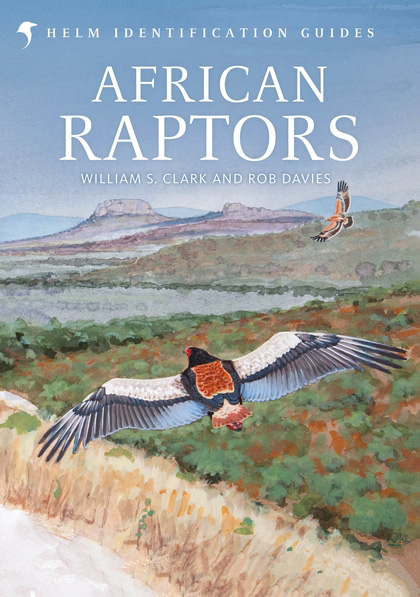African Raptors
- African Raptors by Bill Clark and Rob Davies (Christopher Helm, London, 2018).
- 336 pages, 52 colour plates, more than 300 colour photographs.
- ISBN 9780713665383. Hbk, £50.
- Bookshop from £44.99
African Raptors is the latest addition to the Helm Identification Series. After 20 years in preparation it has been a long-awaited title among raptor fanciers the world over.
After a short 10-page introduction, the book is taken up by the species and subspecies accounts. There are 107 in total, covering all the breeding species as well as Palaearctic migrants and vagrants to the continent.
The plates are grouped at the front of the book, each one facing a title page with brief captions. Following these is the main text, with photographs and a very detailed and up-to-date distribution map, showing breeding and wintering areas as well as occurrence during migration.
The text for each species varies in length from half a page (Dickinson's Kestrel) to almost two pages (Western Marsh Harrier), while most accounts are between 1 and 1.5 pages long. The coverage of Palaearctic migrants seems in many cases both longer and more detailed compared to typically African species, which is surprising in a guide on African raptors.
The plates by Rob Davies, the second author, are good, in my opinion among the best when comparing field guides covering African raptors. Many figures have clearly been drawn from photographs, which has guaranteed correct shape and detail, a clear improvement compared to many of the earlier guides.
But where photos have not been available the result is more variable. Compare for instance the perched adult snake eagles on plate 12, which are excellent, with the perched juveniles next to them.
Some plates have suffered from poor printing, and several have come out too dark. Others are crammed and difficult to navigate when trying to find a particular bird described in the caption. All in all, however, the artwork is pleasing and certainly conveys a sense for the bird in the field.
Each species account is divided in a number of sections: Identification, Measurements, Taxonomy and geographical variation, Similar species, Status and distribution, Habitat, Behaviour, Moult, Description, Unusual plumages, Hybrids, Etymology and References. With the average text being quite short, this leaves rather little space for the main topic, raptor identification.
Most of the identification text is a rather straightforward description of the plumages, rather than useful advice on how to tackle difficult species groups or deal with identification pitfalls.
I found the text inconsistent in many places. Sometimes the captions contradict what the plate or photograph showed, in other places the main text was imprecise or even erroneous. For instance, in the accounts for the Milvus kites and honey buzzards it is stated that adults show wave moult in the primaries. In fact these groups moult all of their primaries annually in a regular descending sequence, which means that they do not develop wave moult at all. In many cases old references have been used, while more recent literature has been overlooked.
The more than 300 photographs are a welcome addition to the plates, especially since many of them feature rarely seen birds and plumages. The book would definitely have benefited from more photographs.
Going through the images I found no fewer than 20 misidentifications, mostly concerning age or sex. For example, the Yellow-billed Kite left on page 142 is a juvenile (not adult as stated), the two Eleonora's Falcons on page 306 are both adult females, not juveniles, the Saker Falcon on the left on page 318 is an adult (not juvenile) and the perched calidus-type Peregrine on page 320 is a juvenile and not an adult, to mention just a few. All these and many more could have been correctly identified with a bit of care.
The errors mentioned above may appear minute in relation to the huge task of producing such a book, but they definitely undermine the credibility of the work. Despite the two decades the work has taken, one still gets the impression that African Raptors was written in haste.


